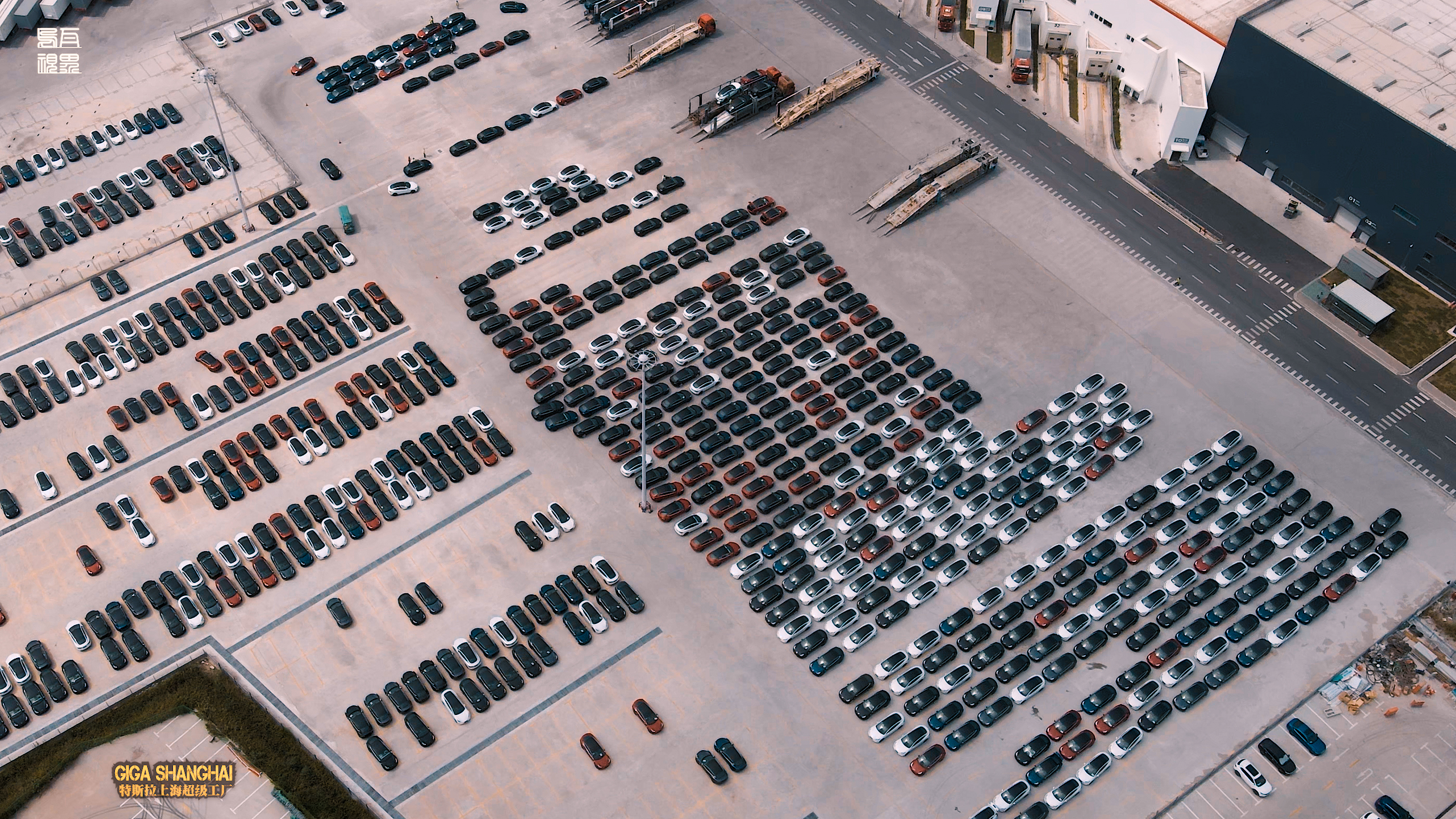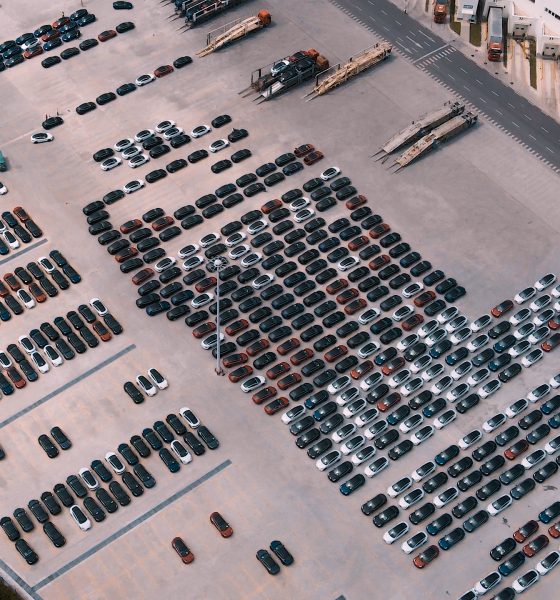

News
Elon Musk rallies Tesla’s troops to pursue another record quarter in leaked email
A leaked email from Tesla CEO Elon Musk to the company’s employees has indicated that the electric car maker may have a solid shot at achieving a record number of vehicle deliveries this Q3 2020. To accomplish this, however, Tesla would need to really dig deep and work hard to reach its targets.
Musk’s leaked email appears to be directed specifically to employees at the Fremont factory, with the message focusing on the importance of deliveries to the California market. The Tesla CEO’s rallying cry could very well be effective, as recent drone flyovers of the Fremont plant have shown numerous vehicles being prepared for deliveries.
“We have a shot at record quarter for deliveries, but we’ll have to rally hard to achieve it. This is the most number of vehicles per day that we’ would ever had to deliver. Please consider vehicle deliveries to be the absolute top priority. It’s also extremely important that we keep factory output as high as possible over the remaining 10 days. This is vital for the California market,” Musk wrote.
Tesla’s end of quarter delivery and production initiatives have been pretty common for the electric car maker. Over the years, there have been times when the company ends up handing over about 30% of its total vehicle deliveries in the final weeks of a quarter. That being said, it appears that Tesla may be in somewhat better footing this third quarter.
Part of this is due to the contributions of Gigafactory Shanghai, which has been firing on all cylinders since the beginning of the quarter. Similar to drone flyovers of the Fremont factory, aerial footage from the Shanghai-based site show the massive factory’s lots filling up with Made-in-China Model 3s. Reports have also indicated that Giga Shanghai will be halting its Model 3 production in the Phase 1 zone for ten days starting October 1, potentially to transition its facilities for the introduction of the all-electric sedan’s much-rumored LFP batteries.
Despite the pandemic, Tesla has kept its original forecast for vehicle deliveries in 2020, with the company looking to deliver 500,000 cars by the end of the year. Considering that the company only delivered 88,496 vehicles in Q1 and 90,891 cars in Q2, Tesla would have to deliver north of 140,000 vehicles in the third quarter to get a clear shot at 500,000 deliveries. And even if Tesla hits more than 140,000 cars in Q3 2020, the company would have to deliver about 180,000 vehicles in the fourth quarter to hit its goal.
Tesla delivery analyst Troy Teslike, whose estimates were 98.6% accurate in the second quarter, currently expects the electric car maker to deliver about 144,000 vehicles in Q3 2020. If Tesla could achieve this, then the company’s seemingly far-fetched goal of delivering half a million electric cars in the middle of a literal pandemic may end up being quite feasible after all.

News
Tesla China quietly posts Robotaxi-related job listing
Tesla China is currently seeking a Low Voltage Electrical Engineer to work on circuit board design for the company’s autonomous vehicles.

Tesla has posted a new job listing in Shanghai explicitly tied to its Robotaxi program, fueling speculation that the company is preparing to launch its dedicated autonomous ride-hailing service in China.
As noted in the listing, Tesla China is currently seeking a Low Voltage Electrical Engineer to work on circuit board design for the company’s autonomous vehicles.
Robotaxi-specific role
The listing, which was shared on social media platform X by industry watcher @tslaming, suggested that Tesla China is looking to fill the role urgently. The job listing itself specifically mentions that the person hired for the role will be working on the Low Voltage Hardware team, which would design the circuit boards that would serve as the nervous system of the Robotaxi.
Key tasks for the role, as indicated in the job listing, include collaboration with PCB layout, firmware, mechanical, program management, and validation teams, among other responsibilities. The role is based in Shanghai.
China Robotaxi launch
China represents a massive potential market for robotaxis, with its dense urban centers and supportive policies in select cities. Tesla has limited permission to roll out FSD in the country, though despite this, its vehicles have been hailed as among the best in the market when it comes to autonomous features. So far, at least, it appears that China supports Tesla’s FSD and Robotaxi rollout.
This was hinted at in November, when Tesla brought the Cybercab to the 8th China International Import Expo (CIIE) in Shanghai, marking the first time that the autonomous two-seater was brought to the Asia-Pacific region. The vehicle, despite not having a release date in China, received a significant amount of interest among the event’s attendees.
Elon Musk
Elon Musk and Tesla AI Director share insights after empty driver seat Robotaxi rides
The executives’ unoccupied tests hint at the rapid progress of Tesla’s unsupervised Robotaxi efforts.

Tesla CEO Elon Musk and AI Director Ashok Elluswamy celebrated Christmas Eve by sharing personal experiences with Robotaxi vehicles that had no safety monitor or occupant in the driver’s seat. Musk described the system’s “perfect driving” around Austin, while Elluswamy posted video from the back seat, calling it “an amazing experience.”
The executives’ unoccupied tests hint at the rapid progress of Tesla’s unsupervised Robotaxi efforts.
Elon and Ashok’s firsthand Robotaxi insights
Prior to Musk and the Tesla AI Director’s posts, sightings of unmanned Teslas navigating public roads were widely shared on social media. One such vehicle was spotted in Austin, Texas, which Elon Musk acknowleged by stating that “Testing is underway with no occupants in the car.”
Based on his Christmas Eve post, Musk seemed to have tested an unmanned Tesla himself. “A Tesla with no safety monitor in the car and me sitting in the passenger seat took me all around Austin on Sunday with perfect driving,” Musk wrote in his post.
Elluswamy responded with a 2-minute video showing himself in the rear of an unmanned Tesla. The video featured the vehicle’s empty front seats, as well as its smooth handling through real-world traffic. He captioned his video with the words, “It’s an amazing experience!”
Towards Unsupervised operations
During an xAI Hackathon earlier this month, Elon Musk mentioned that Tesla owed be removing Safety Monitors from its Robotaxis in Austin in just three weeks. “Unsupervised is pretty much solved at this point. So there will be Tesla Robotaxis operating in Austin with no one in them. Not even anyone in the passenger seat in about three weeks,” he said. Musk echoed similar estimates at the 2025 Annual Shareholder Meeting and the Q3 2025 earnings call.
Considering the insights that were posted Musk and Elluswamy, it does appear that Tesla is working hard towards operating its Robotaxis with no safety monitors. This is quite impressive considering that the service was launched just earlier this year.
Elon Musk
Starlink passes 9 million active customers just weeks after hitting 8 million
The milestone highlights the accelerating growth of Starlink, which has now been adding over 20,000 new users per day.

SpaceX’s Starlink satellite internet service has continued its rapid global expansion, surpassing 9 million active customers just weeks after crossing the 8 million mark.
The milestone highlights the accelerating growth of Starlink, which has now been adding over 20,000 new users per day.
9 million customers
In a post on X, SpaceX stated that Starlink now serves over 9 million active users across 155 countries, territories, and markets. The company reached 8 million customers in early November, meaning it added roughly 1 million subscribers in under seven weeks, or about 21,275 new users on average per day.
“Starlink is connecting more than 9M active customers with high-speed internet across 155 countries, territories, and many other markets,” Starlink wrote in a post on its official X account. SpaceX President Gwynne Shotwell also celebrated the milestone on X. “A huge thank you to all of our customers and congrats to the Starlink team for such an incredible product,” she wrote.
That growth rate reflects both rising demand for broadband in underserved regions and Starlink’s expanding satellite constellation, which now includes more than 9,000 low-Earth-orbit satellites designed to deliver high-speed, low-latency internet worldwide.
Starlink’s momentum
Starlink’s momentum has been building up. SpaceX reported 4.6 million Starlink customers in December 2024, followed by 7 million by August 2025, and 8 million customers in November. Independent data also suggests Starlink usage is rising sharply, with Cloudflare reporting that global web traffic from Starlink users more than doubled in 2025, as noted in an Insider report.
Starlink’s momentum is increasingly tied to SpaceX’s broader financial outlook. Elon Musk has said the satellite network is “by far” the company’s largest revenue driver, and reports suggest SpaceX may be positioning itself for an initial public offering as soon as next year, with valuations estimated as high as $1.5 trillion. Musk has also suggested in the past that Starlink could have its own IPO in the future.








